The rocky sentinels of the Lord of Earth tower over us, scraping against the sky, and even grown men tremble in awe of his power.
Stretching across the landscape in a shallow arc, the Teeth are a large range of several hundred
mountains. It has been said that they look like the lower jaw of some ancient creature, its broken fangs now covered in
rock and
snow. The highest peaks are shrouded by
clouds and
mist, whilst
ice-covered
pines on the lower slopes glisten in the
sunlight. The terrain is rough and rugged, full of sheer cliffs, deep crevasses, and steep inclines.
The mountains are steeped in myth and legend. From the supposed creation of the range from the skull of the leviathan,
Sukram, to them being the sacred throne of
Faolan, the Lord of Earth, these tales are varied and important. As well as stories and lessons, however, the Teeth provide the people who live in their shadow with sustenance, raw materials, and protection.
Geography
The Teeth are located on the continent of
Caia, where they extend in a slight curve across the land for
2111 kilometres. It is one of the shorter mountain ranges on
Etrea, dwarfed, for example, by the
Great Northern Spine in
Aenica, though this does not diminish its reputation as one of the most impressive ranges on the planet. In fact, using current data, the Teeth contain some of the highest mountains in the world - measuring from sea level, this they contain the top three tallest mountains on Etrea.
The Lord's Throne, officially the highest mountain on the planet, is
8874 metres above sea level at the tip of its summit. Almost as tall is the spindly, twisting peak known as
the Spire. It stands at
8830 metres above sea level.
Widow's Peak is the last of this trio, at
8758 metres high. Often, the summits of these three mountains are hidden in the clouds; on clear days, they can be seen from miles away.
Alternate Names
Sukram's Fangs, Damek'a Vastan
The Teeth form a natural border between the countries of
Kaien and
Serukis, whilst the extreme ends of the range spill into
Caillah and
Eshua. The mountains themselves are not currently disputed territory, as they are inhospitable and considered unsuited for civilisation.
Geographically, the mountain range that encompasses the Teeth continues another
2068 kilometres north along the edge of the Caerlean continental plate. The range forms the
island chain known as
the Broken Isles and sweeps up into western
Ilwyrika and the mountains they call
Ikeota.
Whilst no one on Etrea recognises these mountains as the same range, it is important to note that, technically, they are part of a single geographical entity.
There are two major passes through the mountains, though both are impassable for half of the year and extremely risky for the other half. Sea travel is preferred for those who travel between Serukis and Kaien. The first - and most famous - major pass is called
the Throat, so named because even well-prepared travellers who attempt to traverse it are often swallowed whole. The second pass is called
Gabriel's Folly, named after a
Kaienese general who marched an entire army to their deaths through the mountains.
There are several other paths through the mountains, though these are not often used or well mapped. These trails are most commonly used by animals or hunters, though they have, on occasion, been utilised by those who wish to pass through the mountains unseen.
The Teeth are littered with lakes, streams, and waterfalls, though some remain frozen throughout the year. Some of these mountain lakes are several miles deep, plunging below sea level. These lakes and streams are often the sources for rivers that flow through Caia, though there are also some rivers that originate from underground springs in the mountains. During late spring, the lakes and their streams swell with snowmelt, and the waterfalls grow more powerful.
The lower slopes of the Teeth are covered with thick, coniferous forests or shallow, rocky grasslands. These are less harsh than the mountains themselves, and more easily exploited for resources.
History
Scholars believe that the Teeth were formed around fifty million years ago when two large continental plates collided. As one plate was forced under the other, they buckled and folded, thrusting rock formations up towads the sky and creating the rough, serrated mountains that exist today.
Fossils of ancient sea creatures have been discovered on the slopes in recent years, leading scholars to theorise that the mountains were once under the ocean. There are disagreements about whether the mountains were formed from a relatively flat sea bed, or whether the mountains themselves used to be submerged.
In known history - that is,
the Enervant Age - the Teeth have acted as a nigh impassable barrier through the centre of the continent of Caia's largest landmass. For over two thousand years, the
Koushan Mai of
Vasethal believed that they were protected by the mountains, until they were
invaded from the
sea to the north by the
Eriasians in 2394
EA. It would be nearly another fifteen hundred years before Vasethal was invaded from the south, through the mountains themselves.
In 3830 EA, the first
Seruic people
crossed the mountains from Kaien to escape an
oppressive regime and settle in a free land. Not the most auspicious start to Seruic history, this crossing was marred by tragedy, death, and cannibalism. The land they settled in was what was left of Vasethal, though within a hundred years it became known as Serukis.
Serukis was our people's haven. Our hope. To start with, it didn't matter that we weren't alone in its wilds.— A reflective Seruic scholar
Over a hundred years later, in 3959 EA, a Kaienese army led by
Gabriel Sutton, disappeared without a trace in the pass now known as Gabriel's Folly. He had been chosen to lead an
assault on the fledgling country of Serukis, as it was believed - with little to no
evidence - that the Seruic people would be preparing for a war on their former homeland. Sutton was warned against travelling through the mountains and was advised to go by sea. However, he had been led to believe that the war was imminent and he decided the mountain pass would be faster; safer sea travel would be too slow and he could not risk that. Unfortunately, this proved to be the wrong decision, not least because the Seruic were planning no such war. What happened to the army is still a mystery to this day, as not even frozen remains have been found.
Expeditions
There have been a number of expeditions over the centuries from adventurers, pilgrims, and scholars seeking to summit some of the tallest mountains in the Teeth. No successful attempts at climbing either the Lord's Throne or the Spire have been recorded, though several people have claimed to have got close.
In 4401 EA, the first recorded successful
summit of Widow's Peak occured. The Becker brothers,
Joshuan, 26, and
Mattan, 25, alongside a
dragon man named
Veli, reached the summit of Widow's Peak in time to watch the sun crest over the horizon. In later
writings about the expedition, the three men claimed that Veli did not use his dragon form to help the brothers summit. As this cannot be verified, some scholars argue that this cannot be considered a true summit success.
Some of the most famous attempts to summit these mountains are the ones that have ended in tragedy, however. In 4650 EA, a group of twelve, including four women, set out to summit the Lord's Throne. This group is now known as
Dent Party, after their leader,
Mikhail Dent. None of them survived. In 5001 EA, a group of thirty men set out on a climb up the Spire, calling themselves the
Spirelings. Only two of these men returned.
The most recent recorded unsuccessful attempt to climb the Lord's Throne occured in 5334 EA. This
expedition was funded by High Lord
Edmund Ereth, who believed that
the Ereth family, whose patron is
Trestan, the Lord of Ice, should have the first successful summit of the Lord's Throne attributed to their family history. The expedition party included two of Ereth's sons - though, notably, not his heir. None of the expedition party returned and are presumed dead. Some believe that this summit attempt merely served as a cover up to hide the
High Lord's murder of his sons. No evidence exists to suggest this was the case, however, though High Lord Ereth has been unable to completely quash the rumours.

Spirituality and Pilgrimage
The Teeth have long been considered sacred to both the Seruic and Kaienese people, often being referred to as the sentinels of
Faolan, the Lord of Earth, one of the
Five Lords. The mountains are not only integral to the worship of Faolan, but to Trestan, the Lord of Ice, as well. This is especially the case during the long months of
winter when even the foothills are covered in snow. It is often said that some of the more extreme weather that descends on the peaks is the two gods fighting for dominance.
Pilgrims often make the trek from Serukis to one of the smaller mountains in north of the Teeth, a peak called
Faolan's Hand (
5693 metres). About two thirds of the way up, a temple known as the
Shrine of Stone has been constructed and pilgrims travel there to make offerings and to pray in quiet contemplation. Around ten
priests live and work there full time.
However, it is not just the Seruic and Kaienese people that believe the Teeth to be a sacred place. The Koushan Mai have several
temples to their
gods hidden amongst the rocks and ice. They are isolated, shrouded from the view of those who would persecute the people who worship at them.
On the Seruic side of the Teeth, there is a small Koushan Mai settlement, as well as the temple that stands at its centre. Nestled in the valley between two mountains, the
village of the
Tostnad clan is concealed from unwanted intruders. They are a rough, hardy people, shaped by the rocks and never-ending snow and ice. The temple they guard is known as the
House of Silence, dedicated to
Seiran, the goddess of secrets and stars. The House of Silence is shaped like a six-pointed star, with its centre open to the sky above.
Another large Koushan Mai temple located in the Teeth is known as the
Tower of the Watcher, which is dedicated to the sun god,
Hakan. It is built into the side of a sheer cliff, with walls of pale stone and five sharp spires that reach towards the sky. Originally, the spires were plated with
gold to reflect the sun, but this was stripped off centuries ago to prevent the temple being noticed from afar. The Tower of the Watcher is surrounded and protected by the
village of the
Tensem clan.
Hidden in a
cave deep in the mountains is the remnants of a
cult who worshipped Sukram, the leviathan. They disappeared mysteriously several hundred years ago, leaving behind only artefacts and walls painted like the giant scales of a serpent. The cave remains unknown to most, although some references to its location still exist in a few esoteric tomes. This has led to several scholars going in search of the cave and what they believe must be a treasure trove, though none have ever come back from such an undertaking.
Ecosystem
No matter how much experience you have, do not attempt to traverse the mountains during the winter months. Nothing awaits you there but the cold certainty of death.— Excerpt from A Traveller's Guide to the Teeth
The Teeth divide the continent of Caia, trapping the cold, damp air blowing in from the sea to the north. This leaves the lands south of the mountains dryer, though still cool. As a consequence, Kaien gets about a third of the amount of
rainfall as Serukis to its north, with some areas closer to the mountains suffering from
recurring droughts.
The summits of the Teeth are perpetually covered in snow, though the snow line raises and lowers throughout the year as the weather warms and chills. In late
autumn, all of winter, and early
spring, unpredictable
blizzards blow down from the mountains and sweep through the foothills. It is considered wise to make only infrequent trips outside the safety of a settlement during the winter months, as those who do are liable to find themselves stranded. Traversing the mountain passes outside of the
summer months is completely discouraged.
Fauna
Despite their slopes being unhospitable for most of Etrea's sapient species, the Teeth are home to a surprising number of creatures. What follows is not an exhaustive list, but merely an overview of some of the region's most recognisable animals.
Below the snowline, there are large slopes full of loose shale and scree. These slopes are home to
rock crabs, which are gathered for their
meat and
chitin. Female crabs are harvested for their
eggs - or roe - which are high in fat and protein. Popular in the logging camps, rock crab meat is considered a lower class cuisine.
Black-faced goats and
dapper sheep compete for territory and food, both able to scale the dangerous rock faces with ease. These animals are often domesticated for their meat,
milk, and
wool, though plenty of wild ones still exist.
Dwarf snow rabbits are able to prance on top of the snow as if it is solid ground, whilst
ghost hares munch on rare, scrubby patches of grass. Both are hunted for their
fur and their meat, though common opinion holds that ghost hare meat is quite tough.
There are also many predators who call the Teeth their home. Camouflaged against the rock and ice, elusive
rock bears make their dens in hidden
caves. The evasive
starry lynx stalks its prey from banks of snow on high cliffs. Below, packs of
alpine wolves walk the edges of their territory in the darkness of the snowy forests.
In the sky,
mountain kestrels scream out, the sound travelling for miles.
Pygmy rocs nest on precarious ledges, sheltered from the snow and wind, and flocks of fluffy
snow ptarmigans dance together above the tree line. There are even rumours of a pair of
rocs living deep in the mountains, their wingspan large enough to blot out the sun when they pass above.
Flora
Whilst not much plant life exists above the permanent snowline, there are large evergreen forests on the lower slopes and in the foothills. These forests are comprised of mostly
mountain pines, though in some areas populations of
black spruce or
silver fir can be found. These trees are
logged for use in building and for firewood, and are also tapped for their
sap, or resin. It is used for medicinal purposes, as it has antibacterial properties. In Kaien, pine needles are harvested to make
tea.
Whilst not much grass can survive the harsh climate, several species sprout stubbornly on the rocky mountain slopes. These include sheep fescue and silver brome.
In milder months, the forest floor comes alive with a carpet of snow frosse. This plant lies dormant under the snow for most of the year. When the frost melts, however, it explodes into bloom in order to spread its seed in the small window before the cold weather sets in again.
Fungi
Throughout late summer and autumn, the forests surrounding the Teeth are abundant with mushrooms of different types. Some, like the
ashy baby or the
frosted wood cup, make their home in the dead leaf litter, feeding on the decay. Others, such as the
white soldier, grow on dead wood, breaking down fallen branches and trees. There are even fungus that grow on living trees, such as the
rusty bracket, and those that have a symbiotic relationship with their host tree, such as the
brown beard. Whilst some of these mushrooms provide food for animals and the people who live in the area, others are deadly or cause unpleasant side effects.
Surprisingly, there are even fungus that thrive in the dead of winter in the Teeth, and even above the snow line. The most well known of these is
Trestan's chorus, which can survive freezing temperatures and provides a steady source of food throughout the long months of winter.
Natural Resources
The Teeth are formed largely of a mixture of sedimentary and metamorphic rocks. There are large concentrations of
limestone throughout the mountains, a legacy of the fact the land there used to be under ancient seas. There are also large deposits of
marble, especially to the south. On the Kaienese side of the mountains, both limestone and marble are
quarried for use in
construction work. On the Seruic side of the mountains, there are also large concentrations of igneous
granite at lower elevations. Granite, rather than limestone, is preferred for use in construction in Serukis.
On the north side of the mountains are a dozen large
sapphire mines.
Seruic sapphires are famous both across the continent of Caia and further afield. They are most often deep blue, though some greyish-blue and brown ones have also been found. These gemstones are exported all over Etrea.
Several sizeable seams of
coal are present throughout the range, the largest of which is at the Teeth's westernmost point in the country of Eshua.
Coal mining is a relatively new industry in Eshua, with the oldest
mine having been established just over a hundred years ago. The use of coal as fuel is gaining increasing popularity in larger cities across Caia, especially in places where wood is more difficult to access.
The Teeth are also abundant in raw
metal ores, which are
mined extensively. The most plentiful of these ores include
iron,
copper, and
tin, which are all highly sought after by
blacksmiths to craft weaponry and other items. Smaller deposits of other ores, such as
silver and gold have also been found. There are currently only two active gold mines across the entire length of the Teeth, and both have been the cause of several conflicts over the years.
Inhabitants
The lower slopes of the Teeth are littered with settlements that have grown out of industry. On both the Kaienese and Seruic sides of the mountain range, towns have sprung up around quarries, mines, and logging camps. In Eshua, the town of
Monterre has been built around an old, disused quarry.
Though most Seruic and Kaienese settlements are on the lower slopes or in the foothills, there is one city in Serukis that has been built deeper in the mountains. The city of
Frosthollow, where the
High Lord Ereth has the
Frozen Keep is built above high cliffs and deep crevasses. To enable them to survive, the people of Frosthollow have domesticated wildlife, such as the
Ereth goat, to act as rescue animals and beasts of burden, and bred hardier crops that can cope with the harsh weather.
There are a number of Koushan Mai villages hidden in the forests and foothills, and also deeper in the mountains. Whilst a few settlements are old, having been built up around temples, many of them are much more recent. In the last couple of centuries, more Koushan Mai have moved to the area to esape persecution in both Serukis and Caillah.
Historically, the Teeth have been home to several clans of dragons. They have not been seen since the entire species vanished from Caia in 4803 EA. However, the clans are still there; since the
Draconic Concord outlawed shapeshifting amongst the dragons, they appear to be nothing more than
humans to all outsiders. Some clans keep to themselves, living further inside the mountain range, whilst others have dispersed amongst the Koushan Mai, Seruic, and Kaienese settlements.
There is one dragon clan, however, that has been isolated for over two thousand years and was not involved in the signing of the Concord.
The Rakaal live deep in the mountains, oblivious to the existance of the rest of the world. They make use of both their dragon and humanoid forms.
Unbothered by the rest of the world, a relatively large settlement of
merfolk exists in the mountains. The
Hali live in a series of three mountain lakes, connected by deep underground caverns and tunnels. They have evolved with a thick layer of blubber to protect them from the freezing temperatures, and use echolocation to navigate the dark waterways they call home.
Mythology
The Teeth are a vast swathe of land. As such, it is perhaps not surprising that they are the subject of many different myths and legends across a variety of cultures. Whilst a complete treatise of the mythology of the Teeth would take several bound volumes, what follows is an overview of the most well known and widespread tales.
Origins
One of the oldest myths about the Teeth is the Kaienese
story of their origin. The Kaienese believe that the mountains are part of the lower jaw bone of Sukram, a huge serpentine leviathan whose body could wrap the whole way around Etrea. According to the story, the
Five Lords defeated Sukram in battle, working together to take him down before he could destroy what they had worked to create. The relatively recent discovery of the fossils of ancient sea creatures in the Teeth has been taken by some as proof that this story is true.
The Koushan Mai tell a different
story about the creation of the mountains. They believe that
Damek, the god of mountains and sky, built them by hand because another god had bet that he could not. This other god is most commonly identified as
Medan, the god of battle, or
Fisk, the god of luck and travellers. In most tellings, Damek had the aid of an army of rock crabs, who helped him collect the stones to form the mountains. As a consequence, these crabs are considered sacred to the Koushan Mai. In
Mokai Mai, the language of the Koushan Mai, the mountains are known as Damek'a Vastan, or Damek's Glory.
Monsters
Due to being mostly unexplored, the Teeth has its fair share of tales of dangerous monsters and mysterious creatures. Popular stories include those of trolls the size of boulders, tiskies who lead travellers astray with cheerful whistling, and skulklings, spindly humanoids that feast on flesh and bone.
One of the most widespread myths is that of the ice wolf. It is said that these massive white wolves hunt alone and can disguise themselves as ice and snow. They feast on warmth and life rather than meat; some farmers claim to have discovered entire herds frozen to death at sunrise. They are indiscriminate predators and will kill humans just as readily as livestock. People in Kaien believe that if you are out alone after dark and encounter a sudden snowstorm, an ice wolf attack is imminent. The only way to keep these predators at bay is fire, though even this is not a guarantee.
Another widespread myth involves that of the black dog, a shaggy, red-eyed wolfhound, and his court of black, red-eyed cats. He is said to lure travellers into a fatal misstep, whether that is off the side of the cliff or onto the weak ice of a frozen lake. The story goes that this is revenge for being abandoned on a harsh winter's night.
Ghosts and Spirits
Tales of the lingering
spirits of the dead are common in many cultures across Etrea, and the area around the Teeth is no exception. All across the Teeth, people have had encounters with what they believe were the ghosts of the dead. Reports of strange lights, figures that vanish when approached, and the sound of moaning on the wind are all common details in these stories. Like many myths based in this area, scholars have not been able to find any proof of the veracity of these tales.
One of the most famous stories comes from Serukis, involving the dangerous mountain pass of the Throat. Many people died crossing the Teeth through that pass at the beginning of Seruic history, and it is now believed that their spirits congregate inside a
tunnel that cuts through a mountain. It is traditional to sing as on passes through the tunnel, in the hopes of calming any restless spirits and to emerge unscathed.


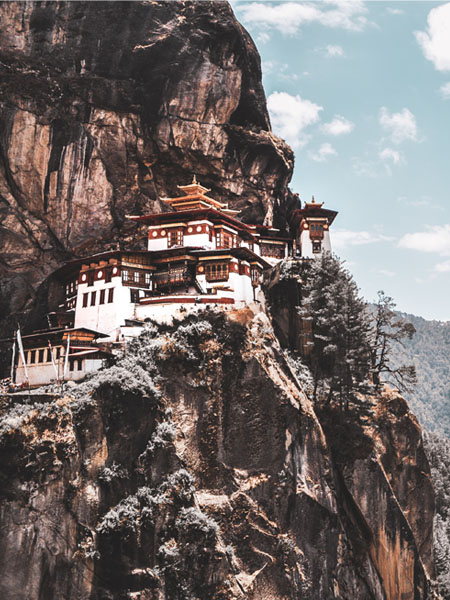
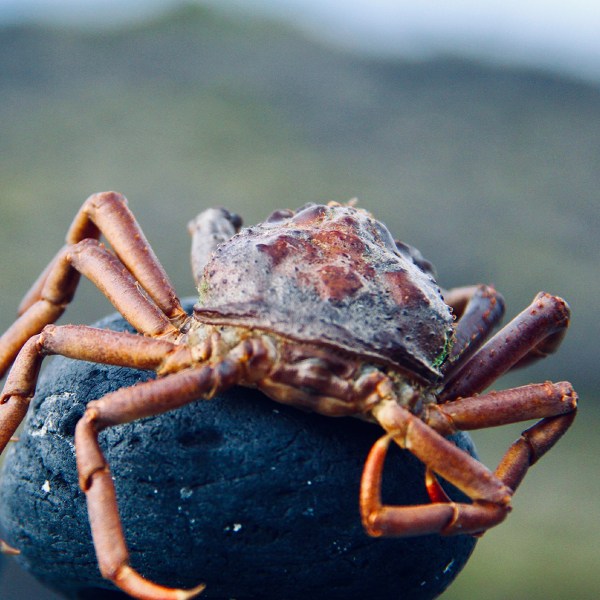


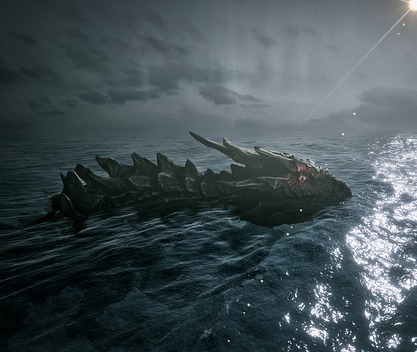
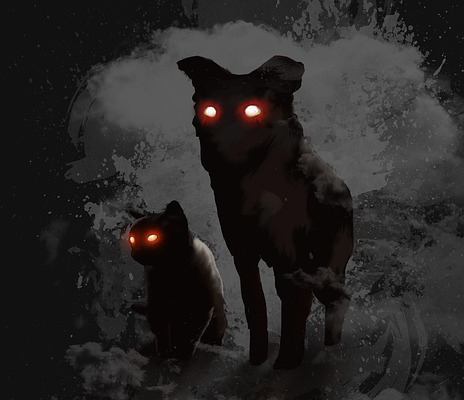




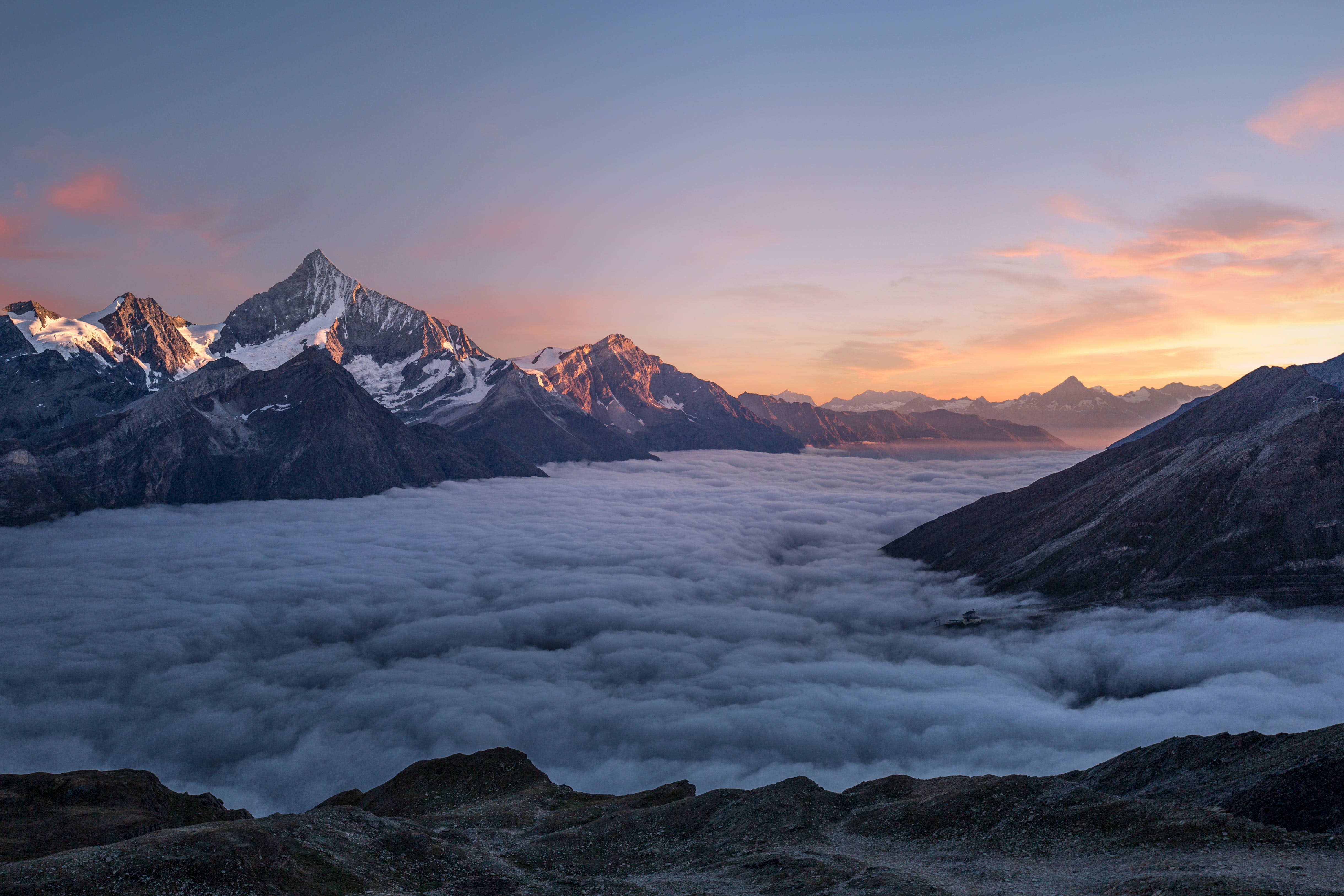




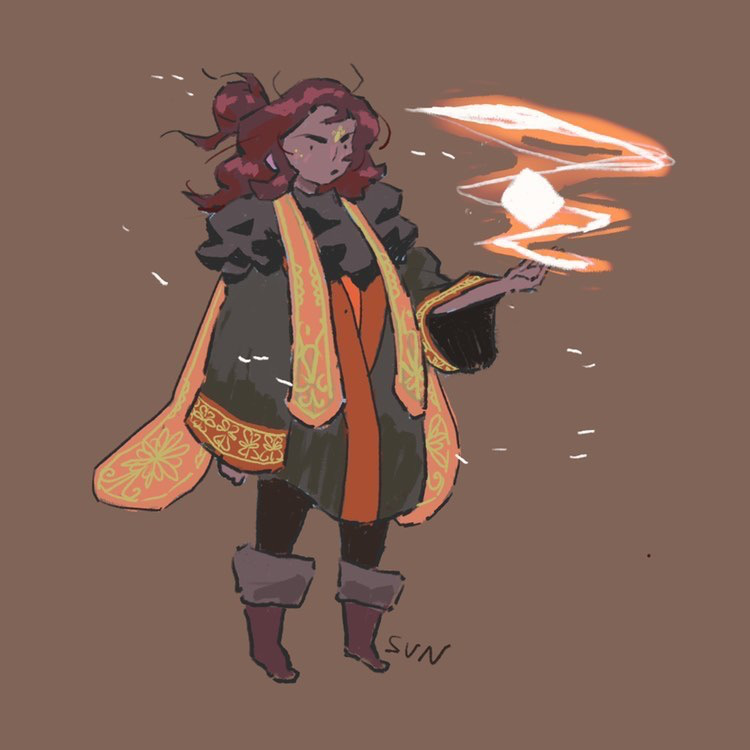

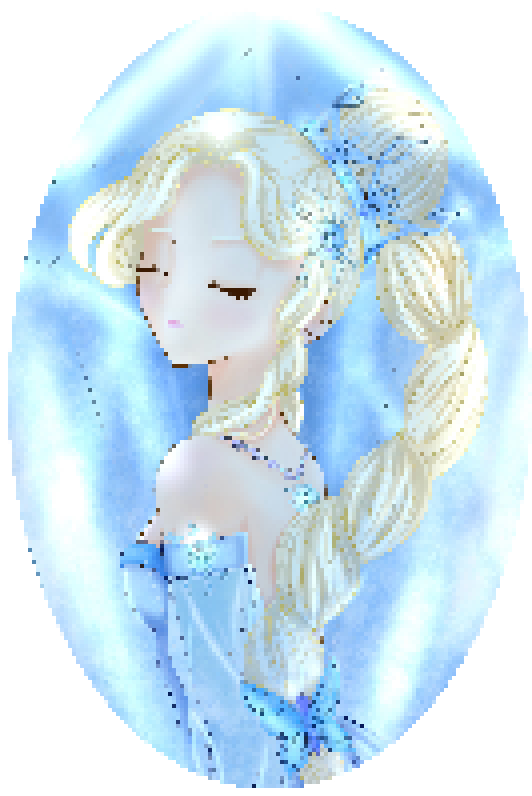


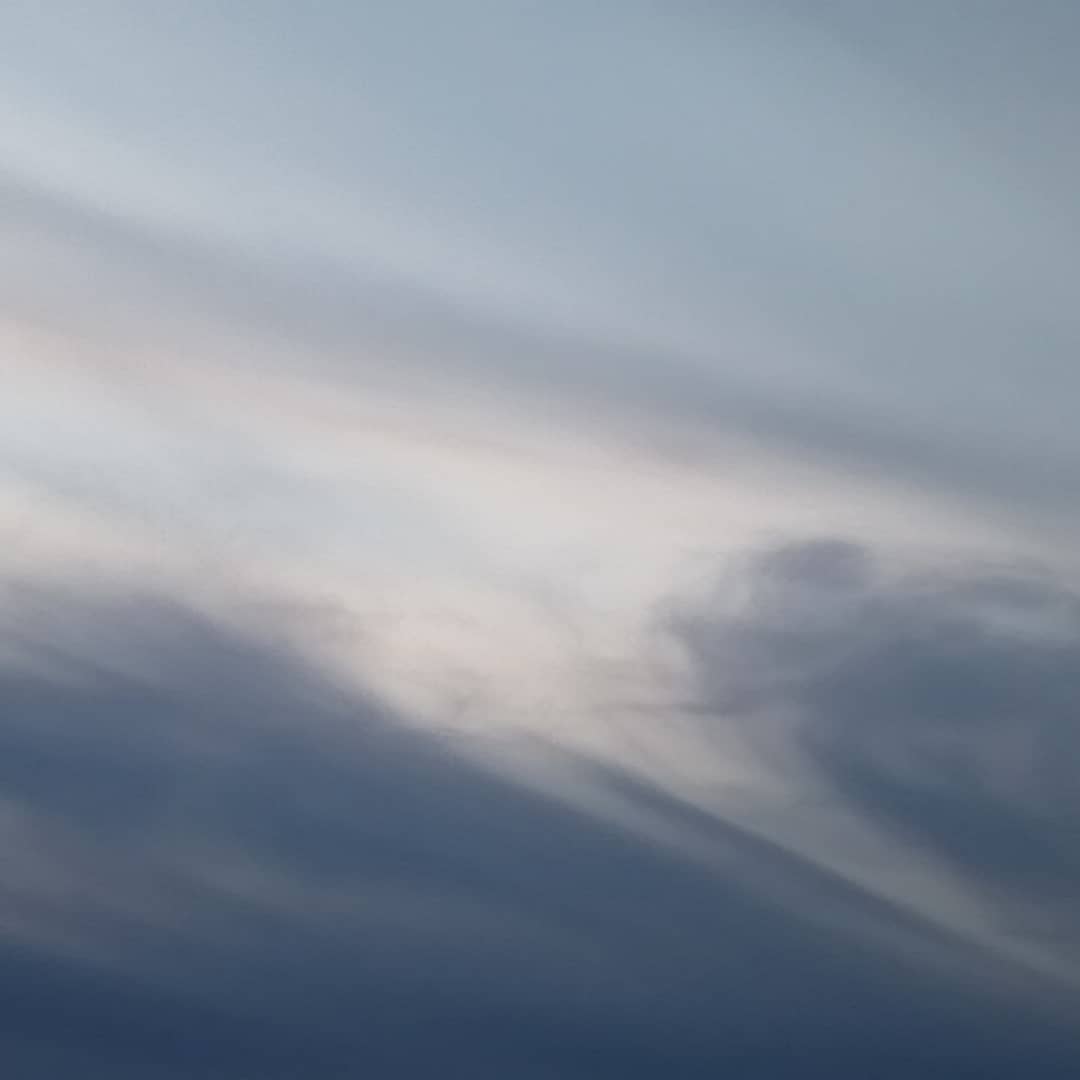




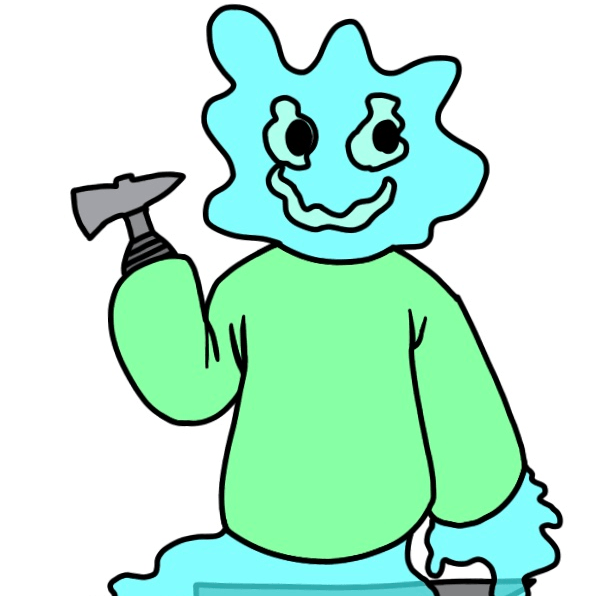
Really not bad for your first article. What method did you use to keep all the images the same consistent size in the body?
Thank you! :) I think World Anvil did it all by itself because I uploaded them bigger than the column width? Not really sure. I'm currently working on artwork to replace the stock photos so hopefully I'll work out how I did it the first time!